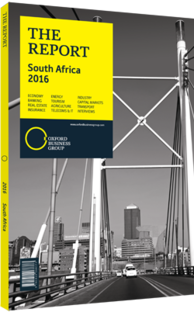Mike Brown, CEO, Nedbank: Interview

Interview: Mike Brown
What impact will rising interest rates have on the South African banking sector?
MIKE BROWN: For a long period of time the South African banking system and the “big four” banks in particular have been remarkably resilient, generating earnings growth in good times and bad times. The challenge now is how to continue to grow earnings in a slower growth domestic environment and in a rising interest rate cycle. Fortunately the rest of the region is growing so banks will accelerate plans to deploy capital throughout the rest of the region.
Looking specifically at South Africa, generally credit growth has been slow with wholesale growth rates ahead of retail growth rates so from a credit view the local banks are well placed for a rise in interest rates. Over the last few years you’ve seen non-performing loans (NPLs) at all-time lows, after peaking shortly following the global financial crisis. If you look at coverage levels against NPLs, they are at all time highs. Capital levels in the banks are at all-time highs. In summary lending books are in good shape, provisions are high, and capital is high. This means the banks are well prepared for a rise in interest rates.
Rising interest rates are not all bad news for banks. Inevitably you will get more bad debts, particularly on the retail side of business, when interest rates rise. But at the same time you will get the “endowment” effect. Your net interest income will expand because of the income you earn on your own capital and effectively what is called lazy deposits rise. The real balancing act in the banking system is if interest rates rise, how much extra money are you going to earn on endowment, and is that more or less than the higher charge in bad debts. So the system is well positioned for a rise in interest rates in particular because the current expectation is the interest-rate cycle will be shallow because of a low-growth domestic environment. What usually hurts banks is not an interest rate cycle but the speed at which interest rates rise. We think the rate rise will be driven by inflation and movement by the US Federal Reserve much more than in past interest rate cycles, which are usually driven by excess loan growth in the system. We certainly don’t have excess loan growth in the system right now. So interest rates are likely to be flatter and bad debt outcomes better than usual.
How much scope is there for an increase in project finance over the next two to three years?
BROWN: On the wholesale side, banks have experienced stronger growth than expected, which can largely be attributed to continued infrastructure spending and the renewable energy sector. While most will point to a lack of progress on big-ticket public infrastructure projects under the Strategic Integrated Projects initiative, there are indeed opportunities available. But by far the development of South Africa’s renewable energy sector, already reaching the fifth round of bids, has been a bright spot in terms of project financing.
To what extent do short-term wholesale deposits impact the risk profile of banks under Basel III?
BROWN: South Africa is already live on meeting Basel III capital requirements and operating on fully phased 2019 capital ratios. The liquidity coverage ratios are in place as well, as of January 1, 2015. Capital and liquidity have not been issues as evidenced by how well South Africa’s banks withstood the 2008 financial crisis. However, the biggest challenge for any emerging market that has a developed mortgage industry come down to net stable funding ratios (NSFRs). In emerging markets, generally depositors keep their money in the shorter end of the liquidity spectrum and if you combine this with the longer dated assets that are typical of a developed mortgage industry, the result is a greater mismatch than in other places in the world; thus NSFRs will remain a challenge for South Africa.
You have reached the limit of premium articles you can view for free.
Choose from the options below to purchase print or digital editions of our Reports. You can also purchase a website subscription giving you unlimited access to all of our Reports online for 12 months.
If you have already purchased this Report or have a website subscription, please login to continue.

